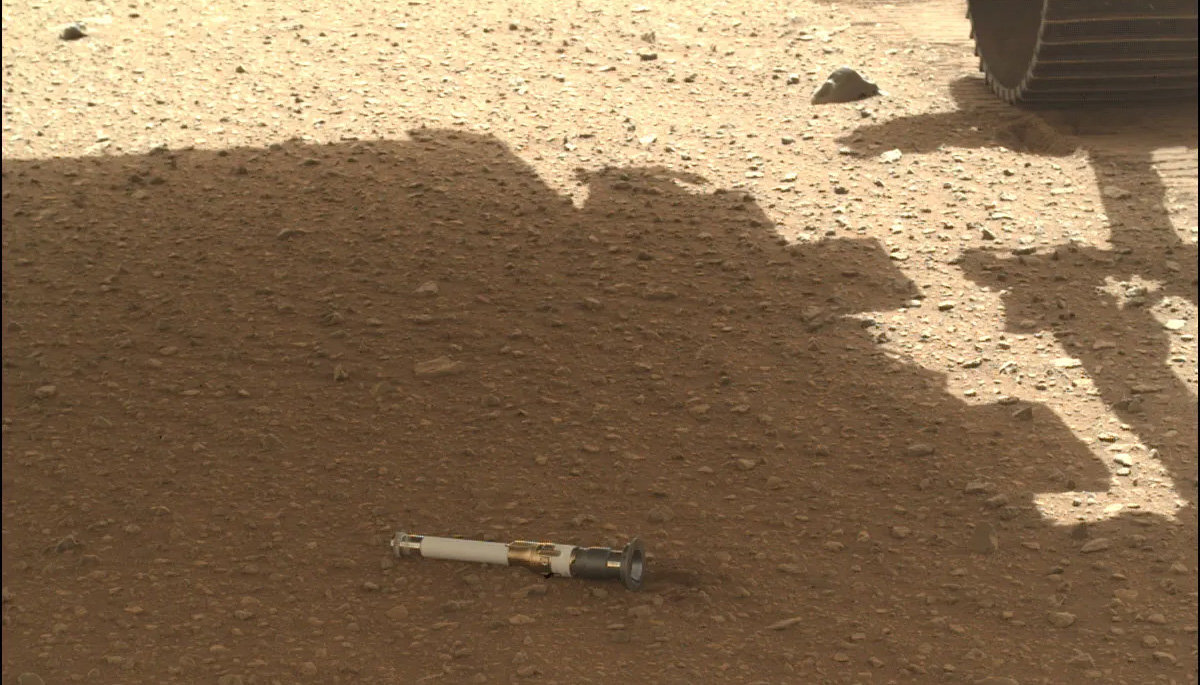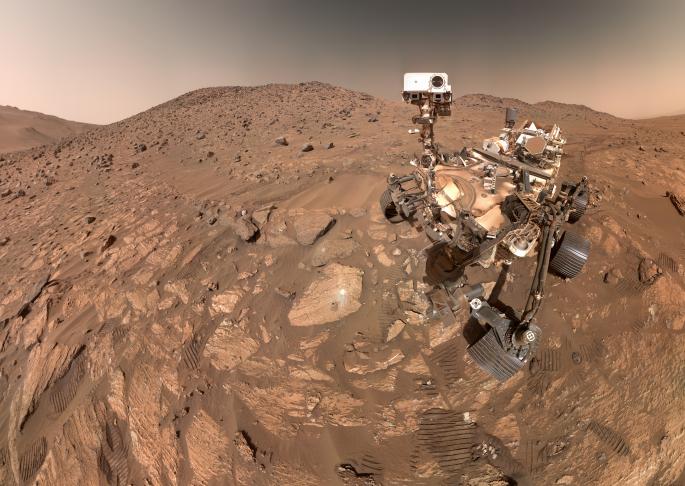
Vital samples from a dried up lakebed on Mars could contain crucial evidence for past life on the Red Planet — but budget overruns are threatening the effort to bring those samples back to Earth, where researchers could actually tap into what secrets the specimens contain.
NASA's Perseverance rover, which has been exploring the ancient lakebed in Jezero crater since landing there in Feb. 2021, holds 43 sample tubes in which it continues to stash Martian material of scientific interest.
"These samples are the reason why our mission was flown," said planetary scientist David Shuster of the University of California, Berkeley, in a statement. Shuster is a member of NASA's science team for the collection and analysis of these samples.
However, while the rover's on board suite of instruments can provide a cursory analysis of the samples, the in-depth science necessary to investigate them can only be done back in a laboratory on Earth. For that to be possible, a mission has to go out to Mars, collect the samples from the rover, and bring them back. The plan was to launch that mission by the end of this decade and have those samples back on Earth by 2033. Yet, the cost of that sample-return mission, which is still in the design phase, began to skyrocket towards $11 billion, and the time to return those samples got pushed back to around 2040.
Related: Air sealed in Perseverance's Mars sample return tubes is as precious as the rocks themselves
So, earlier this year, NASA called a halt to those plans, and solicited ideas for new, cheaper and faster options from the private space industry. This has left the Mars science community in a bind, aware that a smaller-scale retrieval mission might not accomplish all the goals they had in mind — goals that were flagged by the National Academy of Sciences decadal survey as a top priority. Ten proposals are currently under consideration from companies such as Blue Origin, Lockheed Martin and Northrop Grumman.
The original mission blueprints were complex — land a Mars Ascent Vehicle (MAV) on the Martian surface, somehow get the sample tubes from Perseverance (perhaps using air-borne rotor-craft like Ingenuity), blast off the surface in the MAV (samples in hand) and rendezvous with another spacecraft, built by the European Space Agency, in Mars orbit that will bring the samples back to Earth. Yet, no matter how daunting such a mission sounds, it's essential for planetary science to be achieved with these Mars rock subjects.
Now, a new research paper presents an initial analysis of some of the samples, conducted by the rover itself, to illustrate why exactly it is so vital that we bring the samples back to Earth. The research paper concerns itself with seven samples of sediment collected from the delta of the river that once flowed into the lake that filled Jezero 3.5 billion years ago. These samples, collected between July 7, 2022 and Nov. 29 2022, contain both fine- and coarse-grained sandstone and mudstone sediments.
"Sedimentary rocks are important because they were transported by water, deposited into a standing body of water and subsequently modified by chemistry that involved liquid water on the surface of Mars at some point in the past," said Shuster.

Coarse-grained sediments can tell us about the chemistry of the water that deposited them, because they contain both detritus and carbonate minerals that were washed from upstream.
It's the fine-grained sediments that will get most of the attention, however. That's because they are the type of sediment most likely to contain evidence of past microbial life on Mars, if it ever existed. "That's why these samples are so important," said Shuster.
The new report describes Perseverance's examination of the sampled materials. It did not detect organic materials, but Shuster isn't downhearted.
"We did not clearly observe organic compounds in these key samples," said Shuster. "But just because that instrument did not detect organic compounds does not mean that they are not in these samples. It just means they weren't at a concentration detectable by the rover instrumentation in those particular rocks."

That's why it is so important to get them back to Earth, where the most sophisticated laboratories can dissect the samples, learn their chemistry and find out what was really happening on Mars all those years ago.
"When we bring them back to Earth, they can tell us so much about when, why and for how long Mars contained liquid water, and whether some organic, prebiotic and potentially even biological evolution may have taken place on that planet," added Tanja Bosak, who is a geobiologist from the Massachusetts Institute of Technology, and the lead author of the new study.
So far, Perseverance has collected 25 samples, including duplicates and atmospheric samples, plus three "witness" tubes that contain examples of any possible contaminants from the rover. Eight of the duplicate samples were cached at a location known as Three Forks, where they were left on the surface by the rover as a back-up should something prevent Perseverance from handing over its stash to the sample-return mission. The other samples taken so far are of igneous rock probably created when Jezero crater was excavated by the impact that formed it 4 billion years ago.
Thus, the potential importance of the samples cannot be downplayed, as the new study team emphasizes.
"Life was doing its thing on Earth at that point in time, 3.5 billion years ago," said Ken Farley, who is the rover's project scientist at Caltech. "The basic question is, was life also doing its thing on Mars at that point in time?"
Once we get the samples back to Earth, we may finally be able to answer that question, but given the difficulties of achieving such a retrieval mission, perhaps it is best not to rush but to do the mission properly, even if it does cost more and take longer. The samples have been waiting on Mars, resting, for 3.5 billion years. They'll be able to wait a few more years until we are ready to go and get them.
The analysis of the river delta deposits was published on Aug. 14 in the American Geophysical Union's journal AGU Advances.







